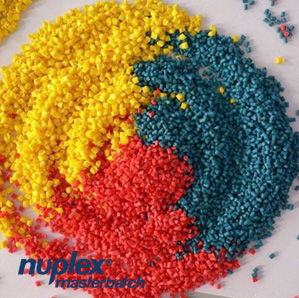NEWS
What makes color concentrates for plastics faded and how to prevent it?
Color concentrates for plastics play an important role in contributing the value of a plastic product by bringing the diversity of choice to end users. However, in some cases, these color concentrates for plastics are easily faded, especially under the pressure of harsh conditions. But what was the exact causes of fading phenomenon happened in colored plastic products?
The impact of light causes discoloration of color concentrates for plastics
The stability under direct sunlight (to be more specific, to the UV radiation) is vital properties of plastic products, especially the ones that function as outdoor furniture. Masterbatch manufacturers have been trying their best to continuously improve this characteristic with the purpose of which adding more value to the final products. For outdoor plastic-based products subjecting to strong light exposure for a long period of time (sometimes it’s nearly the whole usage lifespan of the products), the light resistance (also called as sunproofing ability) level is an irreplaceable index that needs to be seriously considered when examined the color concentrates for plastics.

How did experts examine the light resistance of color concentrates for plastics?
The light resistance is divided into 8 levels with VIII levels indicates the best performance. For products required weather resistance, experts suggest that this level should not be lower than level VI while for other products (indoor objects for example), this level should be maintained at level IV or V. In general, light resistance does not only come from the color concentrates for plastics but also impacted by the carrier resin. This can be explained as the ultraviolet light exposure makes the molecular structure of the resins to be changed, causing color fading. The light resistance and color retention can be improved by adding light stabilizer (such as ultraviolet light absorber) in the masterbatch.
Color concentrates for plastics and the heat stability
The heat stability/resistance is usually considered as the maximum temperature at which there is no change in the molecular structure of the masterbatch, thus there is no fading or discoloration happens under the manufacturing process. Different types of color concentrates for plastics examined different level of heat resistant. For inorganic colorants, which composition is metallic oxide and salt, it has better heat stability than organic pigments, which building molecules are easily decomposed into small fragments under certain temperature. Generally, heat resistance lasts for approximately 4 to 10 minutes. If the processing temperature is higher than 280oC, serious consideration and selection should be conducted in order to find the most suitable color concentrates for plastics with excellent heat resistance.

The antioxidant activity and its relation to color concentrates for plastics
The oxidation of organic pigments had led to the macromolecule degradation in products containing color concentrates for plastics. As a result, colored resins gradually lost its original colors. For example, red color will be faded after mixing with color flakes, azo pigments and chrome color. In some other cases, as the pigments were oxidized, it experienced darker color (such as chromate in chrome yellow tends to darken since the pigment compound also contains lead – a heavy toxic metal). The oxidation process usually causes by high-temperature or by strong oxidant or just simply after a long time exposure to the air.
The acid and alkali resistance also affects color concentrates for plastics
The fading of color concentrates for plastics is also related to the chemical properties of colorants in which the chemical resistance plays an importance role in determine how long the plastic products can keep it colors. Chemical resistance includes acid resistance, alkali resistance and oxido-reduction resistance. For example, while the cadmium yellow is not resistant to acid meanwhile the molubdate red resists to diluted acid (solution with low concentrate of acid). However, this red pigment is quite sensitive to alkali solutions.

Natural properties of the resins and color concentrates for plastics itself
The molubdate read, the cadmium yellow and resins belonging to the phenolic group have strong reduction reaction when interacting with some color concentrates for plastics. Color retention also depends on the natural basis of all components existing in the masterbatch mixture such as the carrier resins, the pigment/dye, surface active agent, fillers compound, dispersing agent, anti-aging agents, etc.


 Tiếng Việt
Tiếng Việt
